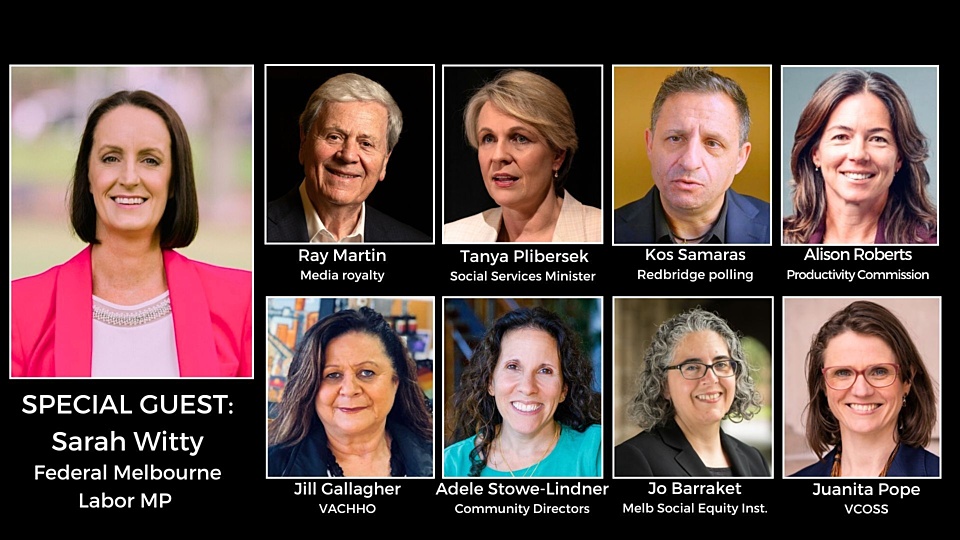
Joan Kirner’s legacy lives on as emerging leaders graduate
Posted on 26 Nov 2025
A roll call of Victoria’s brightest future leaders has graduated from a testing and inspiring…
Posted on 13 Nov 2024
By Carmel Molloy, CEO and founder, NonProfit Alliance

We all know too well that the social sector faces an enduring challenge with widespread under-resourcing.

For-purpose organisations struggle to secure the resources needed to maximise their social impact, but that resource gap also creates a strain on our workforce, risking the loss of employees to burnout, better-paying roles or less stressful jobs.
Even when resources are available, demands on our time, our funding and our talent mean that expectations of what organisations can achieve frequently surpass what is humanly possible.
Recently, the Australian Charities and Not-for-profits Commission (ACNC) highlighted a concerning trend that shows this problem is not going away. According to the ACNC, employment costs have risen almost 10% in the past year – the highest annual increase ever recorded – without a corresponding boost in funding. This financial squeeze underscores the urgent need for innovative solutions that promote sustainability and growth, as well as affordable support for sector leaders.
"Unless we regularly create opportunities to learn from others – and to think differently – our capacity levels will remain stagnant."
Organisations may be overlooking the power of peer-to-peer (P2P) networks as an effective way to tackle resource challenges, increase capacity, enhance job satisfaction, and provide professional and emotional support.
Peer-to-peer support involves exchanging knowledge, resources and insights among those facing similar challenges, increasing efficiency and building a sense of community and shared purpose, all of which is essential for long-term impact.
Every leader, manager and team member at your organisation operates within the boundaries of their own strengths, knowledge and experience. We can only know as much as we already know. Right? No. Unless we regularly create opportunities to learn from others – and to think differently – our capacity levels will remain stagnant. Peer connections can provide those critical opportunities.
Peer-to-peer leadership programs can bring together leaders from across the social sector, promoting a decentralised and inclusive leadership model. Key components of these programs include regular meetings, a commitment to sharing knowledge and resources, problem solving, diverse perspectives, accountability, and a culture of continuous learning and growth.
Peer-to-peer programs create many benefits, including:
These networks involve sharing strategies, skills and tools that have already proven effective, allowing leaders to pool collective insights and speeding up problem-solving and innovative solutions.
Increased collaboration can create cross-sector “synergies” to enable the effective sharing of resources, and to create strategic alliances between organisations. Bringing together diverse perspectives also exposes leaders to different approaches they may not have encountered previously. Our experience is that the peer-to-peer approach improves accountability and shared learning, since leaders are more motivated to demonstrate results, share failures, and improve their approaches based on feedback.
We’ve found these practices also cultivate trust and mutual support, creating resilient networks that can respond to crises, including sharing resources in times of need, in the case of funding cuts, pandemics, disasters or the current financial crisis.
These networks are also excellent at identifying resources gaps and creating opportunities to pool funding, tools, volunteers and other assets, promoting the efficient use of limited resources.
And by pooling knowledge, resources and organisational effort, it is more likely groups will be able to scale up successful (and proven) initiatives. In the end, these strong networks and cross-sector collaborations are better at generating the systems change our sector is seeking.
Leaders working together can better identify and address systemic barriers, advocate for policy change and create more integrated, holistic approaches to social challenges.

The NonProfit Alliance believes that P2P leadership programs ultimately are creating the leaders of tomorrow, by providing aspiring leaders and first-time CEOs with a platform on which to learn from established leaders, and to bring in more underrepresented voices.
The NonProfit Alliance has witnessed the benefits of a structured monthly P2P leadership program, catering for 10–15 leaders and hosting more than 50 “leadership hubs” each year.
We’ve unearthed cost-saving collaborations such as office sharing, joint grant submissions, pro-bono provision of services, secondment of talent, promotion opportunities as a result of peer encouragement, and valuable introductions to government and corporate interests.
Participants in our peer program find that the system helps them think through challenges, learn much more about the sector and get the professional and emotional support that’s not available anywhere else.
The Shepherd Centre’s CEO, Aleisha Davis, summed up what many leaders find valuable about these forums, suggesting peer-to-peer networks had “fundamentally changed how I have approached the new working environment”.
“Having the space, people and power of the group, the different lenses they bring, and the facilitation skill of the mentors and coaches helped me work through challenges,” Aleisha said.
And Kate Miranda, a former director with the Australian Red Cross and now CEO at Asthma Australia, described the network as having “enabled connection, conversations and support to allow us to lead and be better people managers”.
Many well-intentioned peer networks have been formed in the sector, but many don’t last the distance. We’ve all been there. The first meeting, perhaps even the second, is well attended and enthusiasm is high, but as time goes on the numbers dwindle and the responsibilities and commitment rest with a few. The demands of work get in the way.
We know you’re just too busy to commit. But commit you must!
A good peer network will hold you accountable.
If you can’t set aside one day a month to work on yourself and your organisation, ask yourself: how effective is your leadership? How often are you (your leaders and managers) lifting your gaze to look above the everyday?
About the NonProfit Alliance’s leadership hubs
Human resources help: Follow these links to access tools, help sheets, templates and policies: Recruitment, induction and succession | Performance management | Organisational culture | Diversity | Child safety | Paying board members

Posted on 26 Nov 2025
A roll call of Victoria’s brightest future leaders has graduated from a testing and inspiring…

Posted on 12 Nov 2025
At the Institute of Community Directors Australia, we believe that stronger communities make a…

Posted on 12 Nov 2025
Like many Community Directors members, Hazel Westbury is a community leader who isn’t easily…

Posted on 11 Nov 2025
I’ve seen what happens when fear of conflict wins out over taking a principled stand.

Posted on 11 Nov 2025
‘It’s not a question of enough, pal. It’s a zero-sum game. Somebody wins and somebody loses’.

Posted on 11 Nov 2025
Progressive economic Richard Denniss believes the constant hunt by governments for the political…

Posted on 10 Nov 2025
Federal Labor MP Sarah Witty, who was elected this year in the seat of Melbourne in a nail-biting…

Posted on 21 Oct 2025
An artificial intelligence tool to help not-for-profits and charities craft stronger grant…

Posted on 21 Oct 2025
Artificial intelligence (AI) is becoming an essential tool for not-for-profits seeking to win…

Posted on 21 Oct 2025
Funders and the not-for-profits (NFPs) they work with should treat artificial intelligence (AI) as…

Posted on 15 Oct 2025
As a middle-aged white guy, Dennis Banfield sure has his work cut out for him convincing people…

Posted on 15 Oct 2025
Not-for-profits (NFPs) seeking to stand out in a competitive funding environment must be clear…